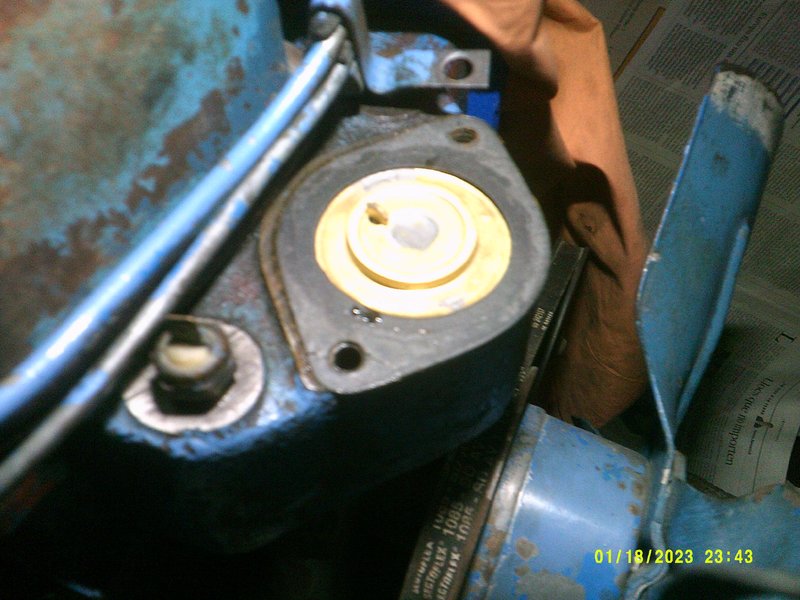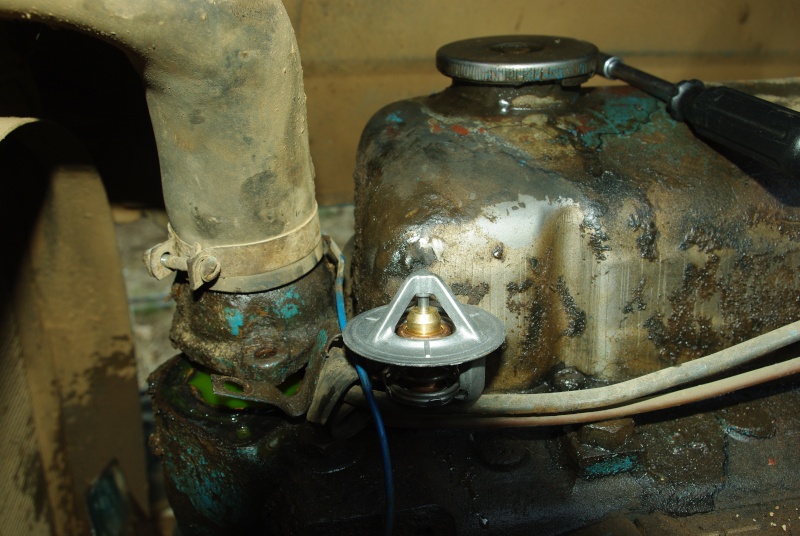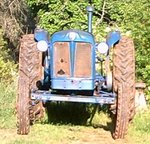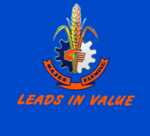Just re read these two threads again (
viewtopic.php?f=2&t=6839viewtopic.php?f=2&t=7247) and thought it was worth clarifying some things.
Billy26F5 wrote: ↑Thu May 11, 2023 11:15 am
the thermostat must be the right kind. If the thermostat lacks bypass control in an engine that needs it there will be a tendency to run hot and even overheat. This also means that the opening temperature must be correct, as otherwise the engine will not run at the correct temperature. For all Major's this temperature should be between 176ºF and 187ºF, to get a running temp between 180ºF and 195ºF. Any Major with a Mk2 or later head including all Ebro made engines must have the shrouded type thermostat or the bypass control will be non existent. This is particularly important in hot climates with a 5 fins per inch radiator and a two blade 15" fan, exactly what Ebro used on nearly all their tractors (the 160's had a 17" two blade fan), with the incorrect non shrouded thermostat.
The above is important together with the following:
To keep air out it's essential to use a thermostat with a jiggle pin (whatever period engine you have) and to place it in the highest possible position. On a Major engine it's like this:

Always ensure 3 gallons of coolant are in before trying to run (add an extra gallon for 6 cylinder engines roughly), any running without adequate cooling will ruin the liner o-rings among other things, even for just a few revolutions. A simple hole is not enough as it allows circulation to the radiator thus increasing the warm up time. For anyone wondering the engine takes 2 gallons (3 in a 6 cylinder) while the radiator and hoses have 1 gallon (all types of radiator, as the tubes were never altered).
Also all Major's have a bypass, on Mk1 engines it's a small bore uncontrolled type while Mk2 and later have a shroud controlled type with more than twice the flow capacity (water pumps are different too and should not be mixed, always try to fix the old pump first). That is where the shroud is so important. Also the engine was designed for bellows thermostats, so that should be what is used (wax types will not give good cooling to the rearmost cylinder, especially in 6 cylinder engines). Also worth noting the correct fan and radiator must be used, and always with the cowl for the fan. (for correct fan use see this:
viewtopic.php?f=2&t=8654) For 6 cylinder engines in hot conditions it might be worth using a radiator from a petrol tractor with 10 fins per inch (although rare on tractors after 1420356 they do exist, although I would probably prefer to recore a 5 fin per inch repro radiator for that as petrol tractors are rare to 10 fins per inch). Cooling capacity might be an issue to anyone wanting a 6 cylinder petrol (not a recommended thing but I can see the appeal for having one to go with Brian's friend's petrol Super Major). Four blade 18" fans are best for both 6 cylinder engines in hot conditions, a std 17" two blade is probably enough in Britain or colder conditions. Pressure caps should be limited to those Ford offered (made by AC) of 4 and 7 lb. Under 7 lb some bellows thermostats might suffer, but above that liner o-rings once again become vulnerable. As far as coolant goes the most important thing you need in the water is corrosion inhibitor of the inorganic type, depending on conditions adding antifreeze (only ethylene glycol should be used) will allow a wider temperature range but will also reduce the coolant's heating value, meaning it takes less heat to reach boiling point from the same temperature, and if it does boil the antifreeze concentration will become even higher. In short, 50% antifreeze is ok for british conditions but with higher temperatures it's worth reducing the concentration to enable more heat to be handled, but always have corrosion inhibitor in as othewise corrosion will ruin the liners and their o-ring grooves.
To summarise the Ford specs are the best starting point, with 6 cylinder engines requiring 1 1/2 times the cooling capacity of 4 cylinder engines (assuming they're correctly run at tractor revs) and on tractors with radiator shutters they should be used to further control temperature as per Ford instruction (only for tractors prior to 1420356).
Sandy




